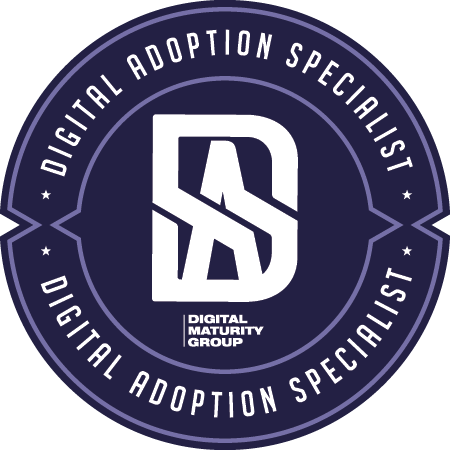In the wake of the COVID-19 pandemic, businesses and individuals have had to adapt to a rapidly changing world. The pandemic has accelerated the need for digital transformation across various industries. Digital adoption, the process of integrating digital technologies into everyday life and business operations, has become crucial for survival and success in this post-pandemic era. This article will explore the reasons why digital adoption is the key to thriving in a post-pandemic world.
Introduction: The Impact of the Pandemic
The COVID-19 pandemic has reshaped the world in profound ways, impacting economies, societies, and businesses worldwide. Traditional brick-and-mortar operations faced significant challenges, while those that embraced digital technologies and adapted swiftly were able to weather the storm. Digital adoption has emerged as a critical factor in determining an organization’s ability to survive and thrive in the post-pandemic landscape.
Understanding Digital Adoption
Digital adoption refers to the process of integrating digital tools, technologies, and strategies into existing workflows, operations, and systems. It involves the adoption and full utilization of digital solutions to improve efficiency, productivity, customer experience, and overall business performance. Digital adoption is not limited to businesses alone; individuals and communities can also benefit from embracing digital tools and resources.
Enhancing Resilience through Digital Adoption
Digital adoption enhances an organization’s resilience by providing the agility and flexibility needed to navigate uncertain and rapidly changing environments. By leveraging digital technologies, businesses can quickly pivot their operations, switch to remote work setups, and adapt their strategies to meet evolving customer needs.
Adapting to Remote Work Culture
The pandemic has accelerated the transition to remote work, making it a necessity rather than a choice for many businesses. Digital adoption enables organizations to create a seamless remote work culture by leveraging collaboration tools, project management software, and communication platforms. It empowers employees to work efficiently from anywhere, breaking down geographical barriers and fostering collaboration.
Improving Customer Experience and Engagement
Digital adoption enables businesses to enhance customer experience and engagement by leveraging digital channels, personalized marketing strategies, and data analytics. With digital tools, organizations can understand customer preferences, provide personalized recommendations, and offer seamless online experiences, leading to increased customer satisfaction and loyalty.
Streamlining Business Operations
Digital adoption streamlines business operations by automating repetitive tasks, optimizing workflows, and eliminating manual errors. From inventory management to supply chain optimization, digital technologies such as cloud computing, Internet of Things (IoT), and enterprise resource planning (ERP) systems enhance operational efficiency and reduce costs.
Embracing Data-driven Decision Making
In a post-pandemic world, data-driven decision making is paramount. Digital adoption facilitates the collection, analysis, and interpretation of data, enabling businesses to make informed decisions based on real-time insights. By leveraging data analytics tools and machine learning algorithms, organizations can uncover patterns, trends, and opportunities that drive growth and competitive advantage.
Harnessing the Power of Artificial Intelligence
Artificial intelligence (AI) plays a vital role in digital adoption. AI-powered solutions enable businesses to automate tasks, personalize customer interactions, and improve predictive capabilities. From chatbots to virtual assistants, AI enhances efficiency, reduces response times, and enables organizations to deliver personalized experiences at scale.
Enhancing Cybersecurity Measures
As businesses embrace digital technologies, cybersecurity becomes a critical concern. Digital adoption necessitates robust cybersecurity measures to protect sensitive data, intellectual property, and customer information. Organizations must invest in cybersecurity infrastructure, employee training, and threat detection systems to safeguard against cyber threats and ensure data privacy.
Empowering Employee Productivity and Collaboration
Digital adoption empowers employees by providing them with the tools and resources needed to work efficiently and collaboratively. Project management platforms, video conferencing tools, and document sharing systems enable seamless collaboration, regardless of physical location. This increased productivity and collaboration foster innovation and drive organizational growth.
Ensuring Business Continuity
The pandemic highlighted the importance of business continuity planning. Digital adoption enables organizations to create robust disaster recovery and business continuity strategies. By leveraging cloud-based solutions and remote access technologies, businesses can ensure uninterrupted operations even during unforeseen events or disruptions.
Overcoming Challenges and Barriers
Digital adoption is not without its challenges. Organizations may face resistance to change, lack of digital literacy, or budget constraints. However, by addressing these challenges through effective change management, training programs, and strategic planning, businesses can overcome barriers and embrace digital transformation successfully.
The Role of Leadership in Driving Digital Adoption
Leadership plays a crucial role in driving digital adoption within organizations. Leaders must champion digital transformation initiatives, provide resources and support, and foster a culture of innovation. By leading by example and promoting a digital-first mindset, leaders can inspire employees to embrace change and drive successful digital adoption.
The Future of Digital Adoption
The post-pandemic world is likely to witness further advancements in digital adoption. Emerging technologies such as blockchain, augmented reality, and 5G connectivity will open new avenues for innovation and disruption. Organizations that continue to prioritize digital adoption and stay at the forefront of technological advancements will be better positioned for future success.
Conclusion
In a post-pandemic world, digital adoption has become the key to survival and success for individuals and businesses alike. Embracing digital technologies, enhancing customer experiences, streamlining operations, and leveraging data-driven insights are imperative for thriving in the new normal. By prioritizing digital adoption and investing in the necessary tools, resources, and talent, organizations can navigate uncertainty, seize opportunities, and pave the way for a prosperous future.
Frequently Asked Questions
- What is digital adoption? Digital adoption refers to the process of integrating digital tools, technologies, and strategies into existing workflows, operations, and systems to improve efficiency, productivity, and overall performance.
- How does digital adoption enhance resilience? Digital adoption enhances resilience by providing organizations with the agility and flexibility needed to navigate uncertain and rapidly changing environments. It allows businesses to quickly adapt their operations, switch to remote work setups, and adjust strategies to meet evolving customer needs.
- What role does artificial intelligence play in digital adoption? Artificial intelligence plays a vital role in digital adoption by enabling businesses to automate tasks, personalize customer interactions, and improve predictive capabilities. AI-powered solutions enhance efficiency, reduce response times, and enable organizations to deliver personalized experiences at scale.
- How can organizations overcome challenges in digital adoption? Organizations can overcome challenges in digital adoption by addressing resistance to change, providing digital literacy training, and strategically planning the transformation process. Effective change management, resource allocation, and leadership support are key to overcoming barriers.
- What does the future hold for digital adoption? The future of digital adoption is promising, with emerging technologies like blockchain, augmented reality, and 5G connectivity driving further advancements. Organizations that continue to prioritize digital adoption and embrace technological advancements will be well-positioned for future success.
Book a Wingman Today for a Free Digital Adoption Plan Consultation
There is no doubt that technology is critical to your business today. Organizations need to adopt a digital-minded strategy to be able to thrive. But it’s essential that technology is deployed correctly. And more specifically, you shouldn’t start without a solid digital adoption plan in hand.
If you feel that your current technology infrastructure might be holding your organization back from reaching your goals and objectives, it may be time to invest in a digital adoption plan, like what Wingman can provide you. Contact us today and we can show you how to make your technology work harder and smarter for you by creating your own unique digital adoption plan.
PS: Secure your $15,000 Canada Digital Adoption Grant Today
Did you know you can get up to $15,000 grant towards your digital adoption plan…and an interest free loan up to $100,000 and a hiring subsidy to implement it? Ask us about the Canada Digital Adoption Plan and Boost Your Business Technology Grant. Wingman is an approved CDAP Digital Advisor partner of Canada’s Innovation, Science and Economic Development Canada. Only an approved CDAP Digital Advisor can help you access the CDAP grant to have your digital adoption plan get approved through the CDAP program.
Book a Wingman today to discuss how we can help.






